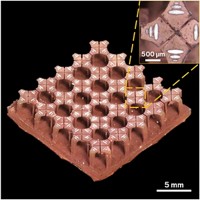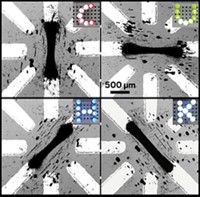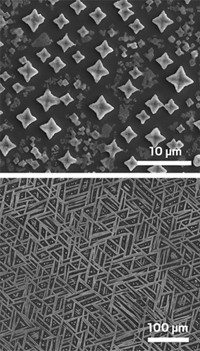Advertisement
Grab your lab coat. Let's get started
Welcome!
Welcome!
Create an account below to get 6 C&EN articles per month, receive newsletters and more - all free.
It seems this is your first time logging in online. Please enter the following information to continue.
As an ACS member you automatically get access to this site. All we need is few more details to create your reading experience.
Not you? Sign in with a different account.
Not you? Sign in with a different account.
ERROR 1
ERROR 1
ERROR 2
ERROR 2
ERROR 2
ERROR 2
ERROR 2
Password and Confirm password must match.
If you have an ACS member number, please enter it here so we can link this account to your membership. (optional)
ERROR 2
ACS values your privacy. By submitting your information, you are gaining access to C&EN and subscribing to our weekly newsletter. We use the information you provide to make your reading experience better, and we will never sell your data to third party members.
Electronic Materials
Heat-free method yields printed metallic circuit connections
Procedure exploits properties of a quirky liquid metal to form circuit components at room temperature on unusual substrates, including Jell-o
by Mitch Jacoby
July 23, 2019
| A version of this story appeared in
Volume 97, Issue 30

Researchers have exploited the unusual phase change behavior of a certain liquid metal to devise heat-free procedures for printing detailed patterns of fine metal lines on numerous temperature-sensitive materials, including on Jell-o (Adv. Funct. Mater. 2019, DOI: 10.1002/adfm.201903687). The team used the methods to make metallic connections for circuits on nonrigid materials, a fabrication step needed for developing wearable electronics and flexible, foldable displays.
Electronic devices that bend and stretch like athletic wear could lead to new applications in sports, medicine, and robotics. But traditional circuitry fails when it’s flexed, and nontraditional materials that would be used in flexible electronics, such as thin fabrics, paper, and skin, are incompatible with the high-temperature steps typically used for fabricating circuits.
Aiming to bypass those shortcomings, Andrew Martin, Martin Thuo, and coworkers at Iowa State University turned to liquid metal droplets encapsulated in a nanometer-thin oxide skin. Made of Field’s metal, a Bi-In-Sn alloy that melts at 62 °C, the droplets remain liquid at room temperature as long as the oxide skin is intact. Slight mechanical pressure or exposure to acid ruptures the skin, allowing the metal to flow, fuse with other droplets, solidify, and form dense, continuous metal structures. The group made the droplets by blending the molten metal in commercial kitchenware at high speed, then allowing the solution to cool slowly in air.
The team suspended the droplets in hydroxymethyl cellulose to make liquid-metal inks and then used the inks to print patterns manually and with a 2-D pen plotter and a commercial inkjet printer. In the case of the pen plotter, for example, after a pen filled with the formulated ink deposited the droplets, a second empty pen tapped the droplets, rupturing the skin and releasing the metal. One test showed that the electronic properties of circuits made with these inks were comparable to those made with traditional methods. Another test showed that metal patterns printed on paper were robust and did not break or peel even after 10,000 bending cycles.
To demonstrate the range of applications for the new method, the Iowa State team used the technique to make a flexible, programmable light-emitting diode display on paper; a programmable touch-pad keyboard on paper; and a system of resistor-based sensors that they used to control a robotic hand. They also used the liquid-metal inks to draw complex patterns on nontraditional materials, including a Jell-o mold, leaves, and live rose petals.
“These results are quite interesting,” says Northwestern University’s John A. Rogers, a specialist in flexible electronics. Rogers notes that these materials, which the researchers used in “striking demonstrations,” could form the basis of printable conductors for flexible electronics, technologies that underpin the so-called internet of things, and other applications where cost and processability are important considerations.





Join the conversation
Contact the reporter
Submit a Letter to the Editor for publication
Engage with us on Twitter